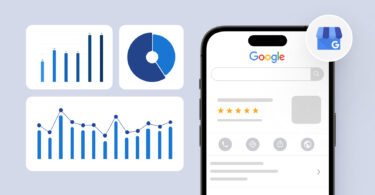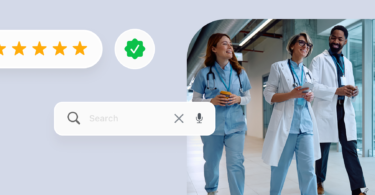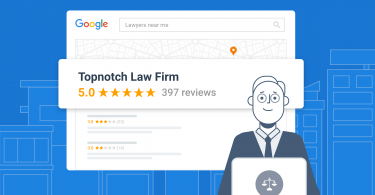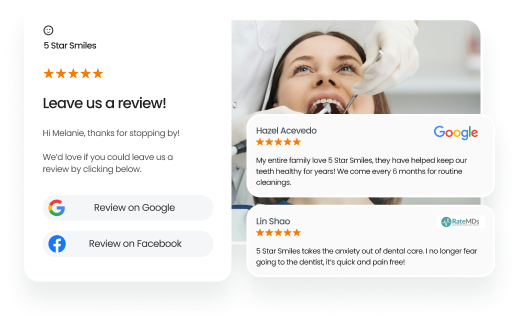Imagine a customer searching for the exact service you provide; they’re ready to book. But when they click your Google Business Profile (GBP), the operating hours are off, the hero image is four years old, and the most recent review is dated 2022. In seconds, that motivated prospect scrolls to a competitor whose profile looks current, credible, and open for business.
In 2025, your Google Business Profile isn’t just a listing of your business. It’s often the first and only chance to make an impression. According to Birdeye’s State of Google Business Profile 2025 report, based on insights from 150,000+ businesses, outdated profiles, fake reviews, and missing content are costing brands visibility and customers.
In this blog post, we’ll break down what’s changed, what most businesses are getting wrong, and what you can do today to stay visible and competitive.
Table of contents
- State of Google Business Profile: Key changes in 2024 that matter in 2025
- Search visibility begins with Google Business Profile
- Understanding the customer journey inside your Google Business Profile
- Google reviews: Your most influential local ranking signal
- How visual assets influence discovery and customer action
- Reserve with Google usage and adoption trends
- Common gaps that undermine performance
- Who’s winning (and who’s not): Industry performance gaps
- Most underutilized Google Business Profile features
- Four-step process to elevate your profile
- Looking ahead: Profiles in the age of AI search
- Strategic recommendations for marketers
- Your Google Business Profile is too important to ignore
- Level up your Google Business Profile with Birdeye
- Survey methodology
State of Google Business Profile: Key changes in 2024 that matter in 2025
Before diving into the insights, let’s take a quick look at what changed in 2024 that reshaped how Google Business Profile drives your business’s visibility:
- Feature retirements: Google removed in-profile chat, call logs, and GBP-hosted websites.
- Tighter verification standards: Duplicate listings, outdated info, or inconsistencies can now trigger instant suspension. Google’s quality bar is higher, and profiles that don’t meet it disappear from results.
- AI overviews: Google’s generative AI now pulls key info from business profiles to build search answers only if your content is structured and current.
- Fake review purge: Review volume alone won’t cut it. Google removed thousands of suspicious reviews in late 2024.
Bottom line: If your Google Business Profile is outdated, messy, or missing key information, your business may be invisible in 2025 search results.
These changes have raised the bar for local visibility. To appear and perform well, your profile must be complete, accurate, and consistently maintained.
Search visibility begins with Google Business Profile
As consumer behavior evolves, so does the anatomy of search. On mobile, Google often sends users straight to the business profile matching their intent. That profile shows your business hours, services, photos, and a booking button, before they ever visit your website. If your listing isn’t helpful or up-to-date, users simply scroll past.
Let’s take a look at how the search behavior has changed, based on our latest survey.
Category search dominates brand searches
In our latest study, a whopping 86% of all Google Business Profile views came from category-based searches, like “dentist open now” or “best dog groomer” in <their city>. That means most customers have no clue who you are when they start their search. This makes optimizing your business profile for generic, intent-driven search even more important to enhance your discoverability.
How do you climb that list? Here are simple building blocks:
- Complete every field: Include hours, phone, services, products, and attributes.
- Keep details current: Update holiday hours, upload new photos, and update menus or service lists regularly.
- Show proof: Get a steady stream of honest reviews and reply to them quickly.
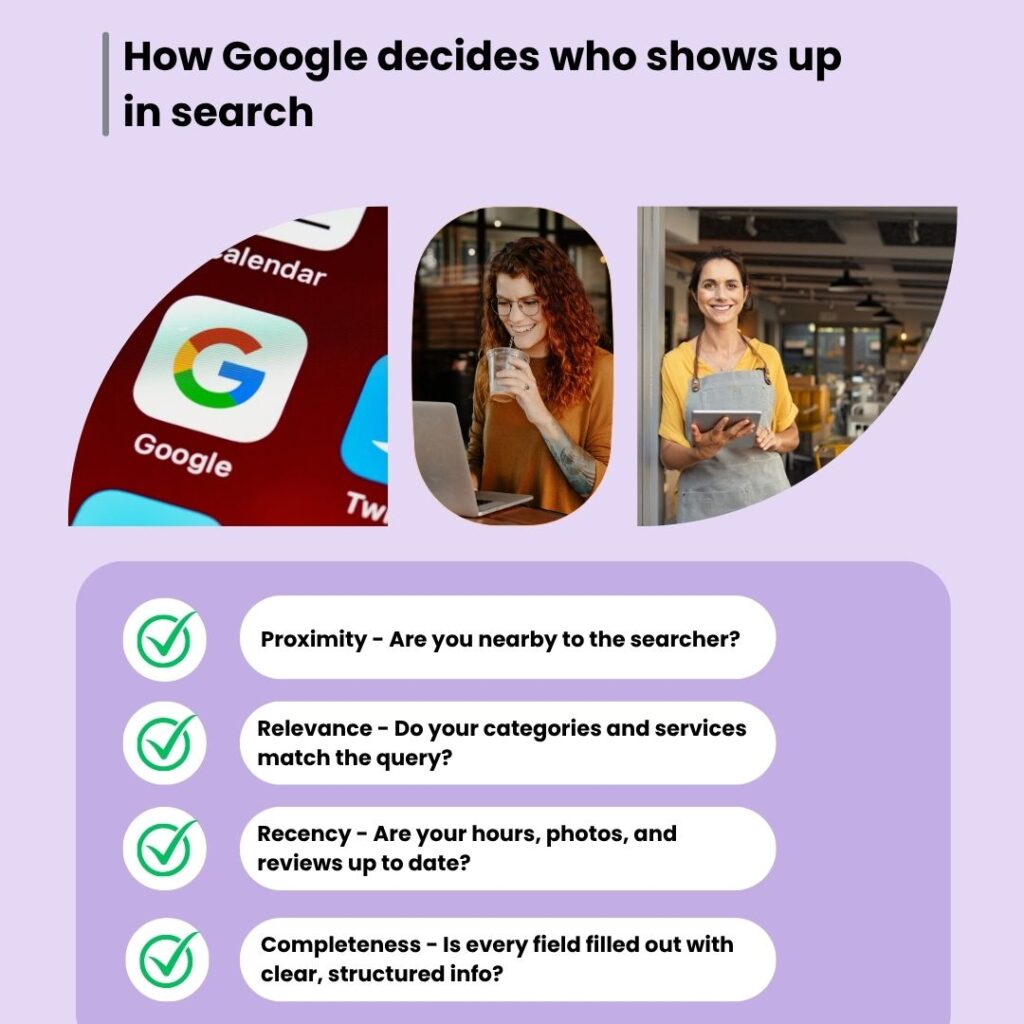
The best-performing Google Business Profiles:
- Build instant credibility through authentic photos and reviews
- Offer one-click access to bookings, directions, or calls
- Answer questions before the customers even ask
Understanding the customer journey inside your Google Business Profile
Your Google Business Profile acts like a mini sales funnel. A potential customer finds your listing, quickly scans it, and decides whether to take the next step or move on.. In just three to five seconds, most customers will:
- Search (e.g., “best dentist near me”)
- Scan (your stars, hours, photos, and reviews)
- Act (click for directions, call, or book)
Every missing field, outdated photo, or unanswered review creates friction and increases the chances they’ll choose a competitor.
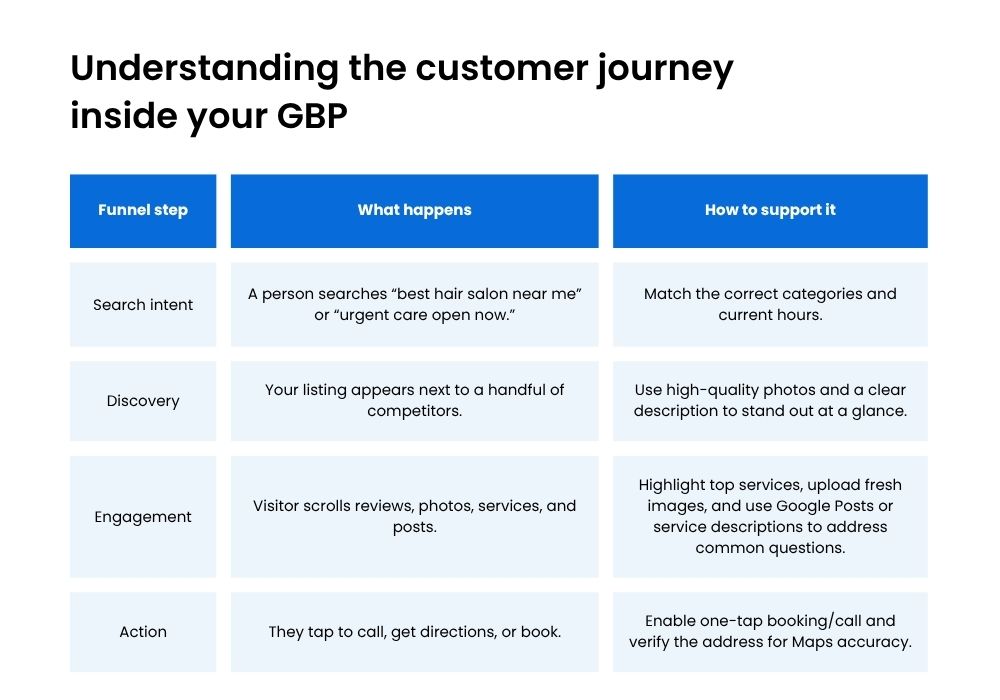
Customer engagement trends
Customers’ engagement with your Google Business Profile directly impacts whether they choose your brand or move on to a competitor. Understanding these engagement patterns helps businesses tailor their strategies for better results.
Here’s how engagement patterns on GBP looked in 2024:
- Website visits: 48% of interactions were website visits, indicating that customers wanted more details about the business before taking the next step.
- Direction requests: 34% of actions were direction requests, showing a strong signal of intent to visit a physical location.
- Phone calls: 17% of interactions were phone calls, reflecting customers who preferred direct communication.

Each of these actions offers insight into where your customers are in their buying journey. Treating your Google Business Profile as an active part of that customer journey means aligning your content and features to support all of these actions.
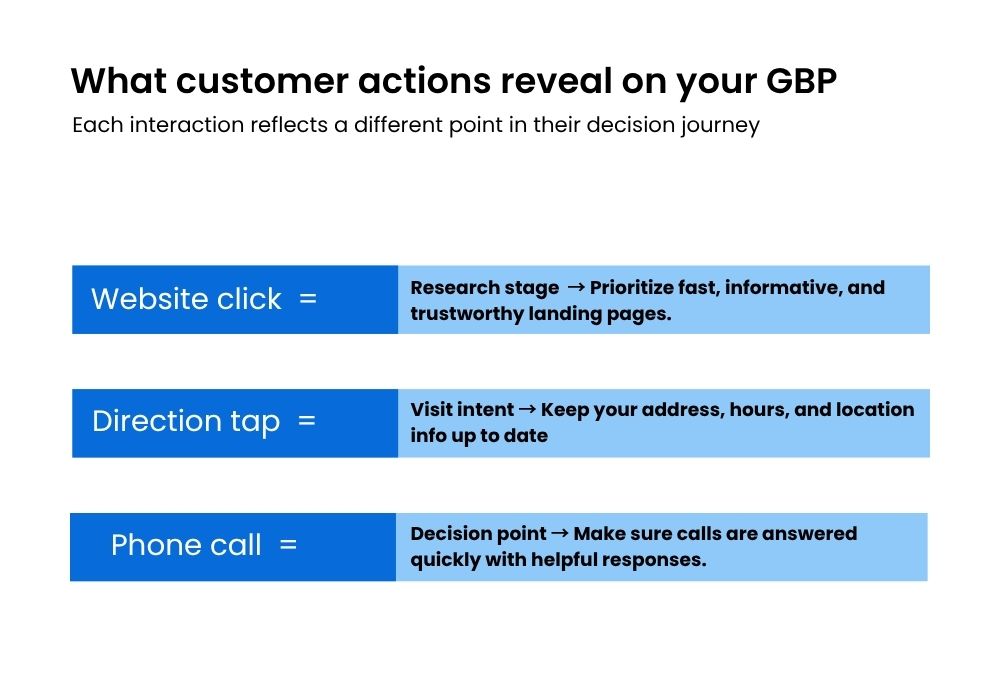
Customer engagement by industry
Customers’ engagement patterns vary by industry. The key is to understand which actions your customers take most often, whether that’s clicking for directions, making a call, or visiting your website.
Once you know the dominant behavior, you can tailor your profile to support it and stand out from competitors who take a one-size-fits-all approach.
By aligning your Google Business Profile with how your audience interacts, you create a smoother path to conversion and capture more high-intent traffic.
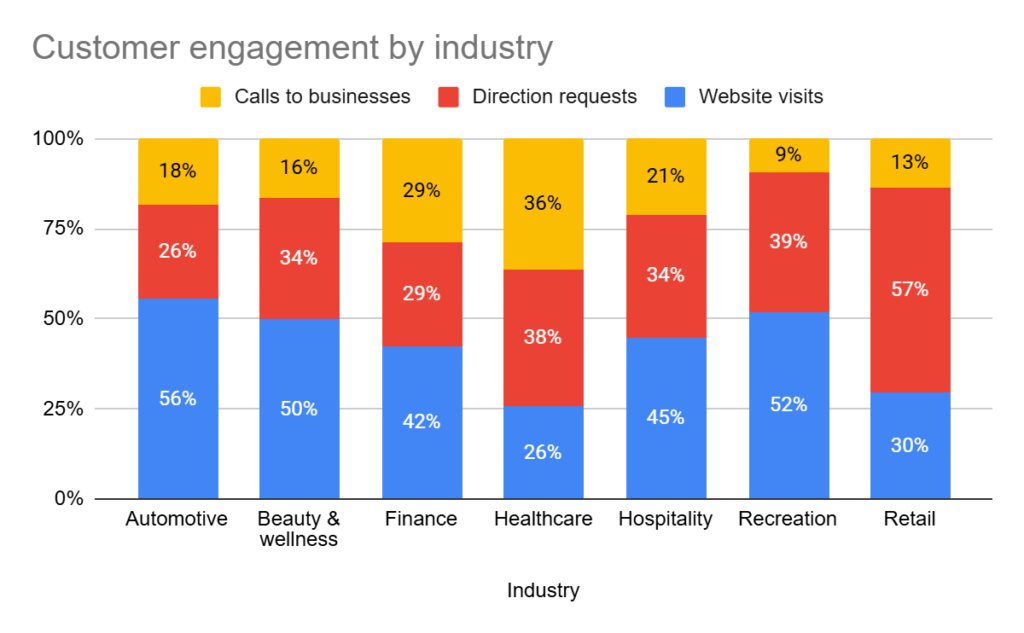
How to act on these patterns:
- If most users visit your website, keep load times under three seconds and mirror Google Business Profile details, services, prices, and reviews above the fold.
- If customers request directions the most, audit address pins, hours, and holiday schedules weekly to avoid frustration caused by wrong-location confusion.
- In call-heavy sectors, put the “Call” button first, route it to trained staff, and track common questions for a live FAQ update.
- Ensure that you fill every field and get verified. Fully populated, verified profiles surface 80% more often in search and generate 4× more website visits, 12% more calls, and 10% more direction requests than incomplete or unverified listings.
Takeaway: Match your optimisation efforts to the action your audience already prefers. Remove friction at that touch-point, reinforce it with fresh visuals and social proof, and let Google’s algorithm reward the relevance you’ve engineered.
Google reviews: Your most influential local ranking signal
In 2024, Google reviews became even more critical to local visibility, trust, and conversions. They accounted for 81% of all online review volume, up from 79% in 2023, making Google the dominant source of social proof in nearly every vertical.
The platform’s late-2024 crackdown on fake reviews further tightened the link between authentic feedback and search visibility.
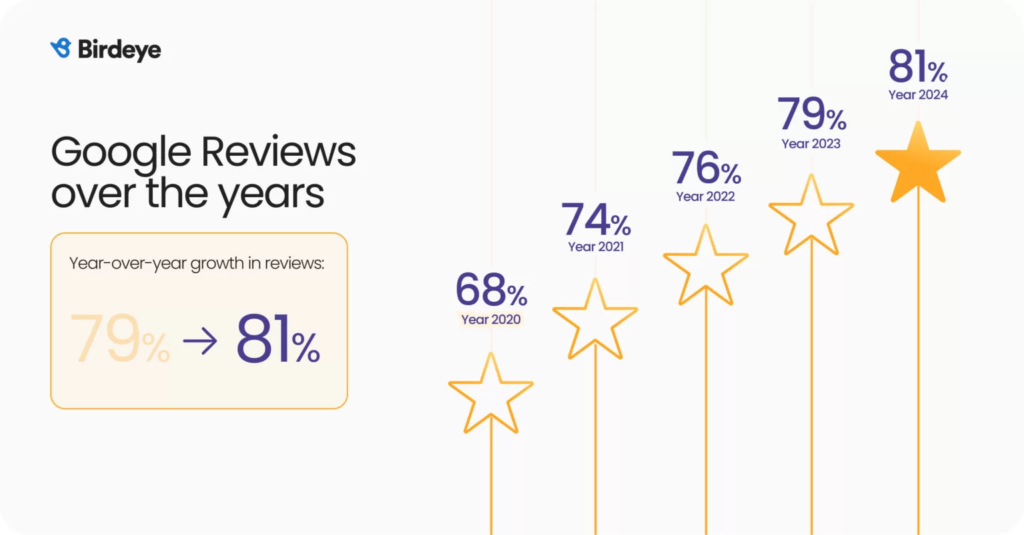
How reviews drive growth
| Review driver | Performance lift (2024) | What it tells us |
| Consistent review velocity | One additional review drives approximately 80 website visits, 63 direction requests, and 16 phone calls | Steady flow of feedback boosts engagement across every intent channel |
| Google’s review share | Google now hosts ≥ 80% of all reviews in most sectors | Google now outperforms niche sites as the primary decision hub |
| Authenticity sweep | Thousands of fake or incentivised reviews were removed in Q4 2024 | Authenticity is non-negotiable; manipulated profiles lose both rank and trust |
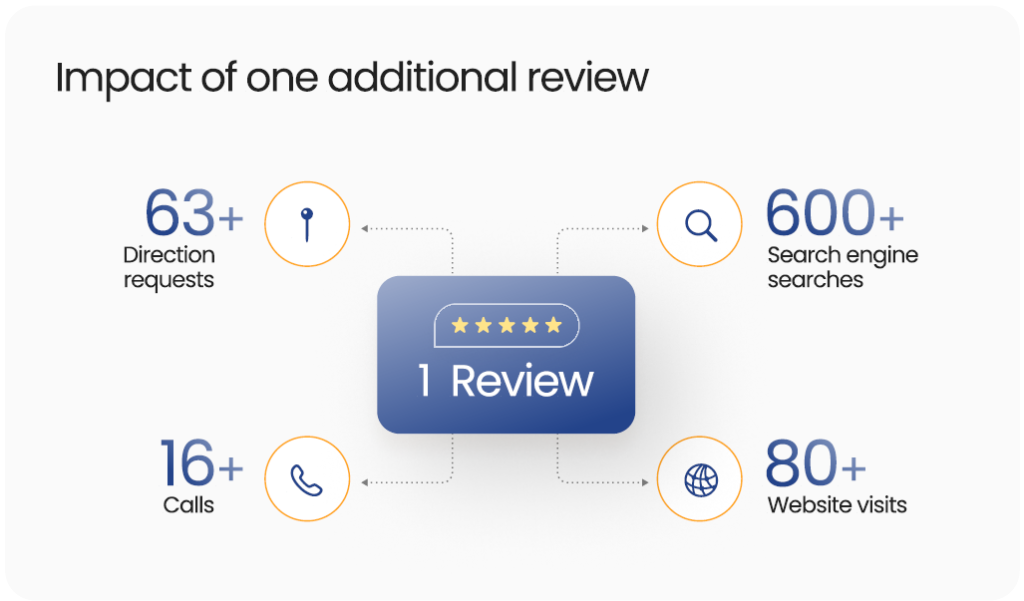
Takeaway: Treat Google reviews as a growth channel. When they’re steady, authentic, and well-managed, they boost ranking, drive action, and build long-term brand trust.
Note: The impact of “one additional review” on engagement metrics will vary by industry and market competitiveness. These figures reflect averages and should not be interpreted as guaranteed results.
How visual assets influence discovery and customer action
Businesses with high-quality, recent photos consistently outperformed peers on engagement metrics like clicks, calls, and direction requests.
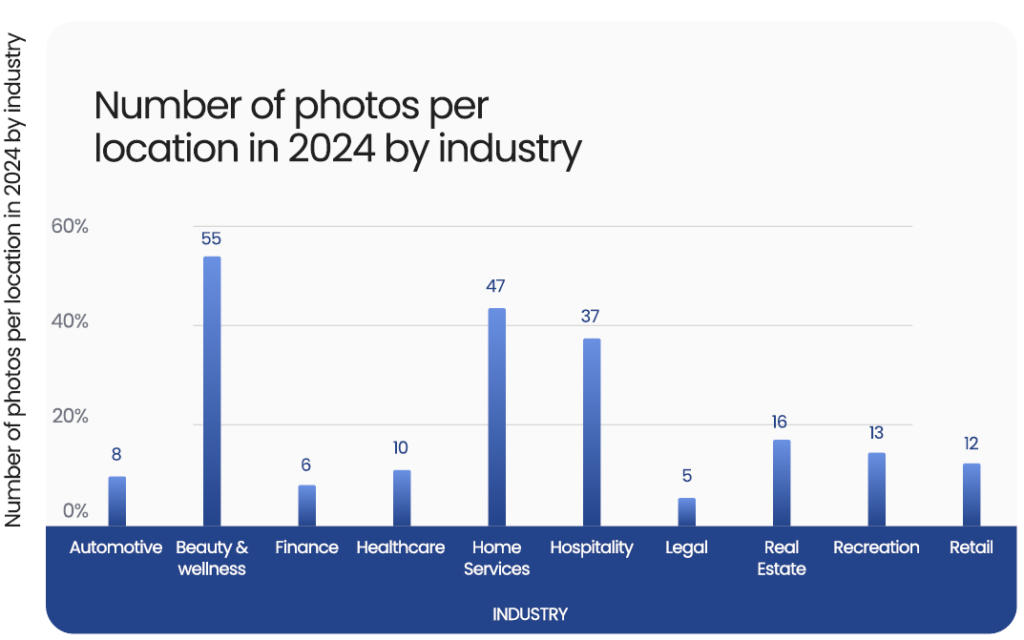
Here’s what the data shows:
- Verified Google Business Profiles with 15+ photos per location saw stronger engagement across all customer actions.
- Beauty & Wellness and Home Services posted the highest photo volume, using visuals to build trust and showcase outcomes.
- Hospitality listings also stood out, where rich, up-to-date imagery translated directly into bookings and foot traffic.
You can slip videos longer than 30 seconds into your Google Business Profile by keeping the file under 75 MB. Google is allowing and even auto-playing some in the second image slot on mobile. Video content, especially showcasing services, staff, or environment, can act as a differentiator in mobile-first discovery.
Takeaway: Prioritize high-quality photos and short videos that reflect your brand’s experience. Keep them recent, real, and relevant to drive action.
Reserve with Google usage and adoption trends
Despite being built directly into Google Business Profile, Reserve with Google remains one of the most underused conversion tools available.
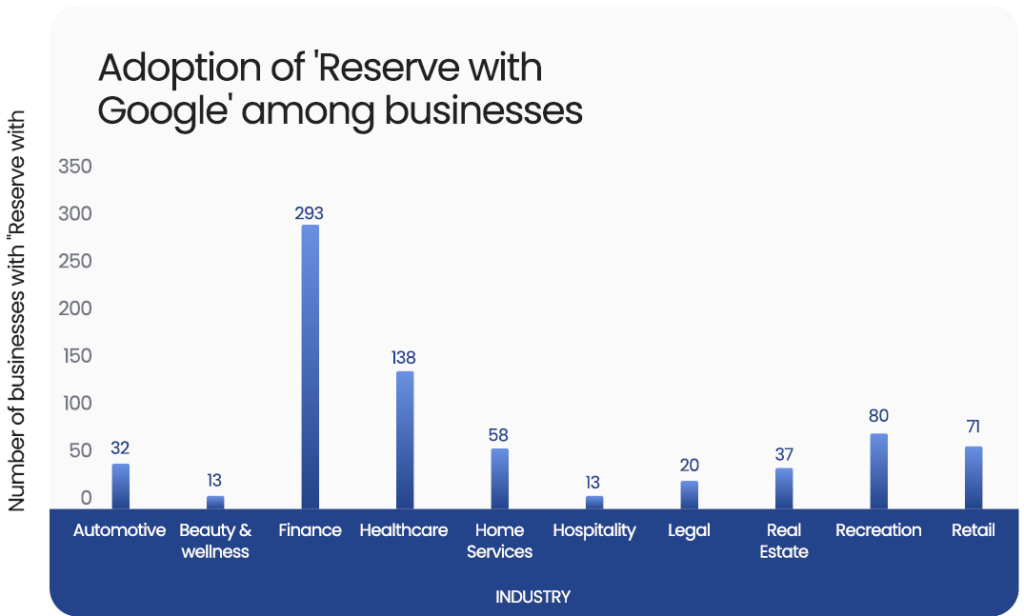
- As of late 2024, less than 5% of business profiles had Reserve with Google activated.
- Beauty & Wellness and Hospitality, where bookings are core to revenue, still show low adoption, leaving easy wins on the table.
- Businesses using it benefit from reduced booking friction, with customers able to schedule appointments directly from search or maps—no extra clicks, no missed opportunities.
Takeaway: If bookings are part of your funnel, enabling Reserve with Google can deliver instant ROI. It reduces drop-off, shortens the customer path, and positions your listing as action-ready. Partner with an approved scheduling provider to unlock it; your competitors probably haven’t.
Common gaps that undermine performance
Even though Google Business Profiles are essential for visibility and conversions, many businesses still miss basic opportunities. Some of the most common issues include:
- Outdated business hours or services
- Inactive or inconsistent review responses
- Low-quality or infrequent photos
- Ignoring built-in tools like “Reserve with Google”
These are often low-effort fixes that can have a significant impact.
Who’s winning (and who’s not): Industry performance gaps
Hospitality, beauty, and wellness brands dominate GBP performance in 2024, thanks to fresh content, regular reviews, and clear booking paths.
Finance, home services, and automotive continue to lag. These lagging industries often fail to use photos, manage reviews, or verify profiles, missing out on high-intent traffic.
Most underutilized Google Business Profile features
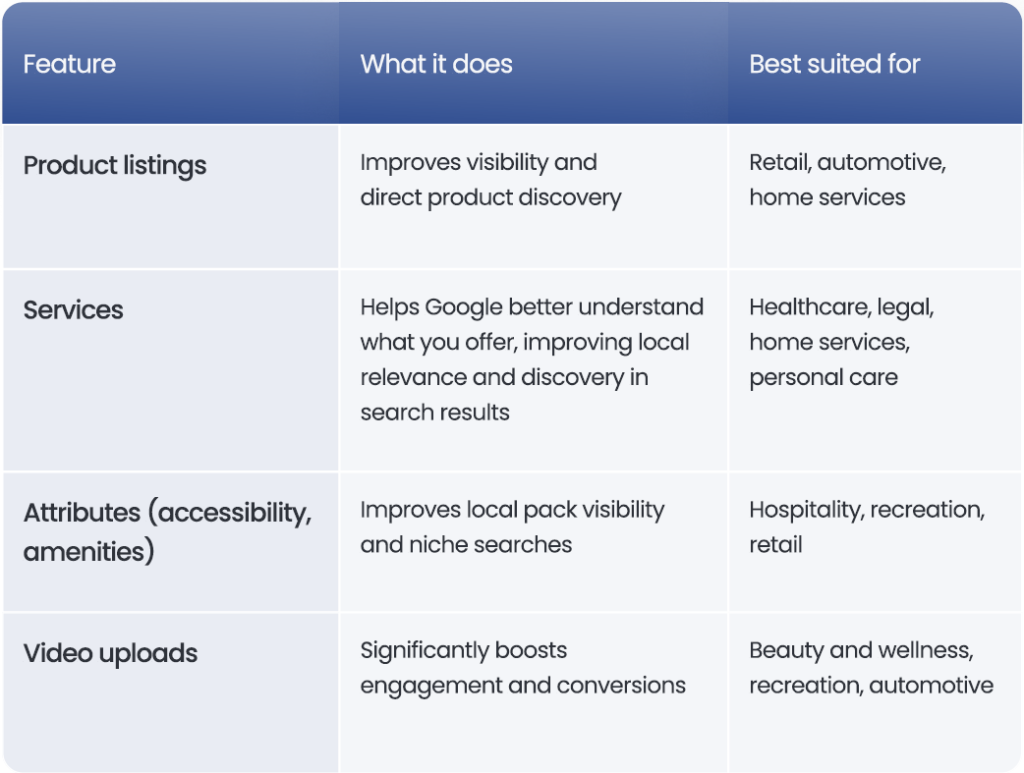
Four-step process to elevate your profile
You don’t need a major overhaul to improve your Google Business Profile. Just stay consistent, focus on the essentials:
- Verify your listing and remove duplicates.
- Upload 10–15 fresh photos, and consider adding a short video.
- Enable bookings via Reserve with Google or an integrated tool.
- Post updates regularly, and respond to all reviews.
Pro tip: Use Birdeye Listings AI to manage every location from one dashboard. You can bulk-edit hours, photos, and attributes, then publish to all Google Business Profile with a single click.
“One thing I love about Listings AI is the ability to ‘set it and forget it.’ We recently updated the open hours for all our storage properties, and being able to make mass updates in a single spreadsheet, without having to log into Google, Apple, and other platforms separately—was a game-changer. Birdeye handled the updates seamlessly, ensuring the changes were reflected accurately across all platforms. This streamlined process has been an incredible time-saver for our team.”
– Ashley Levy, Senior Marketing Manager, Morningstar Properties, LLC
Looking ahead: Profiles in the age of AI search
Google’s new AI Overviews now pull answers directly from Google Business Profiles. When the algorithm builds those summaries, three things decide whether you show up:
| What AI looks for | Why it matters | Quick win |
| Structured data (hours, services, attributes, product lists) | AI Overviews read machine-friendly fields first; blank or sloppy entries get skipped. | Fill every field and review it monthly. |
| Recently updated content | Out-of-date hours or stale photos push you down the pack. | Schedule a quarterly content refresh. |
| Real customer feedback with prompt responses | Google’s model treats recent, answered reviews as proof of quality and relevance. | Ask every happy customer for feedback and answer within 24 hours. |
Profiles that are well-maintained are more likely to appear in AI-generated summaries and be chosen by customers.
Strategic recommendations for marketers
Optimizing your Google Business Profile is the key to creating real, measurable value across marketing, operations, and customer experience. Here’s how:
1. Better attribution clarity
An optimized business profile gives marketing teams clearer insight into what drives offline actions like calls, bookings, and visits, without relying on third-party tracking.
2. Faster customer decision-making
Rich photos, updated services, reviews, and real-time info reduce hesitation. The entire decision journey happens within a single interface, with no website friction and no bounce risk.
3. Operational efficiency at scale
For multi-location brands, consistent profile data eliminates customer confusion, reduces missed calls or visits to closed stores, and keeps NPS scores higher.
4. Reduced ad dependency
Improved organic placement through GBP can reduce the need for expensive local PPC campaigns, especially in competitive categories like dental, salons, and auto services.
5. More consistent CX across locations
A standardized strategy ensures that the customer experience, first impression, reviews, and information accuracy are aligned across every store, clinic, or branch.
Pro tip: Drive visibility where it matters most: Google should be your primary focus for reviews. But an effective strategy also includes reputable third-party review sites and industry-specific directories. This broader presence matters even more as AI-driven tools pull data from multiple sources. A balanced cross-platform strategy helps ensure your brand shows up wherever patients are searching.
Your Google Business Profile is too important to ignore
Your business listing on Google deserves the same care and attention as any other part of your business. It’s where first impressions are made, and where decisions often happen. With the right approach, it can become one of your most valuable marketing assets.
This blog only scratches the surface. If you want to see how your industry is performing, what top performers are doing differently, and where the real opportunities lie, download the full State of Google Business Profile 2025 report. You’ll find:
- Definitive engagement benchmarks for every industry: calls, clicks, direction requests, and beyond
- Verified profiles vs. unverified: How visibility and conversions compare
- The ROI of reviews
- Proven visual uplift: why listings with recent photos and video see more engagement
- Industry-specific insights and marketers’ playbook
The way people discover local businesses has changed. What hasn’t changed is the need to show where it matters and do it with clarity, trust, and relevance.
Level up your Google Business Profile with Birdeye
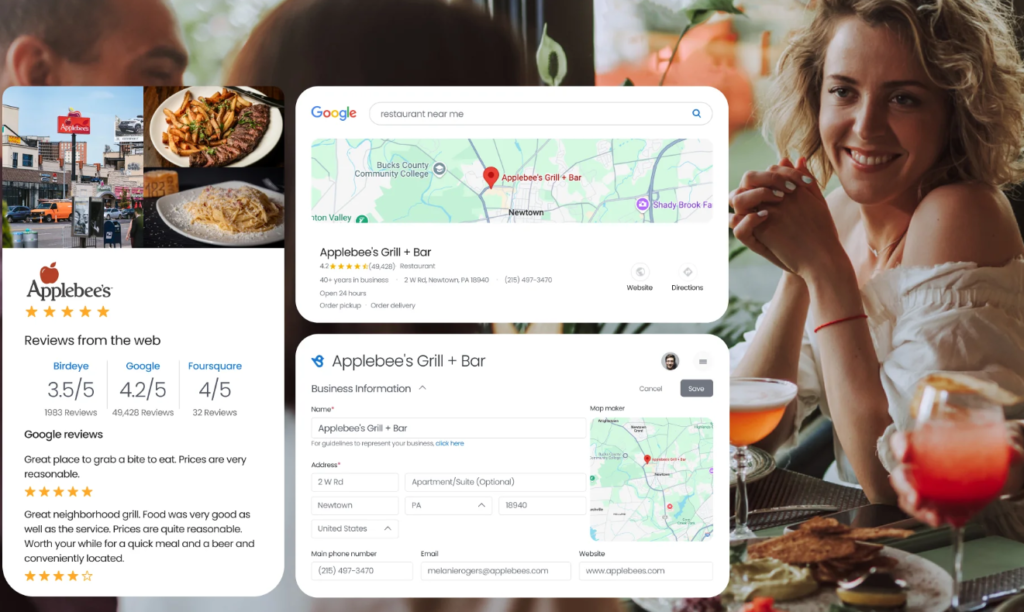
Birdeye Listings AI quietly handles the details that keep every Google Business Profile and all your other directory listings accurate, optimized, and ready for customers. With Birdeye, you can:
- Fix and sync in seconds: Single dashboard updates hours, photos, and service across Google and 50+ directories.
- Automate review management: Trigger review requests after each visit and watch fresh feedback lift your ranking.
- Reply with AI assistance: Get suggested, on-brand responses that turn into trust-building moments.
- Track real-time performance: See calls, clicks, and direction requests by location and benchmark against industry peers.
- Stay a step ahead: Get instant alerts if Google edits your info or a competitor edges past you in search results.
Show Up Where Your Customers Search
Want to see the impact of Birdeye on your business? Watch the Free Demo Now.
Survey methodology
This study analyzes data from over 150,000 businesses using Birdeye across various industries, ensuring a broad representation. The study, compiled and examined at an industry-wide level, strictly maintains the confidentiality of proprietary information.

Originally published
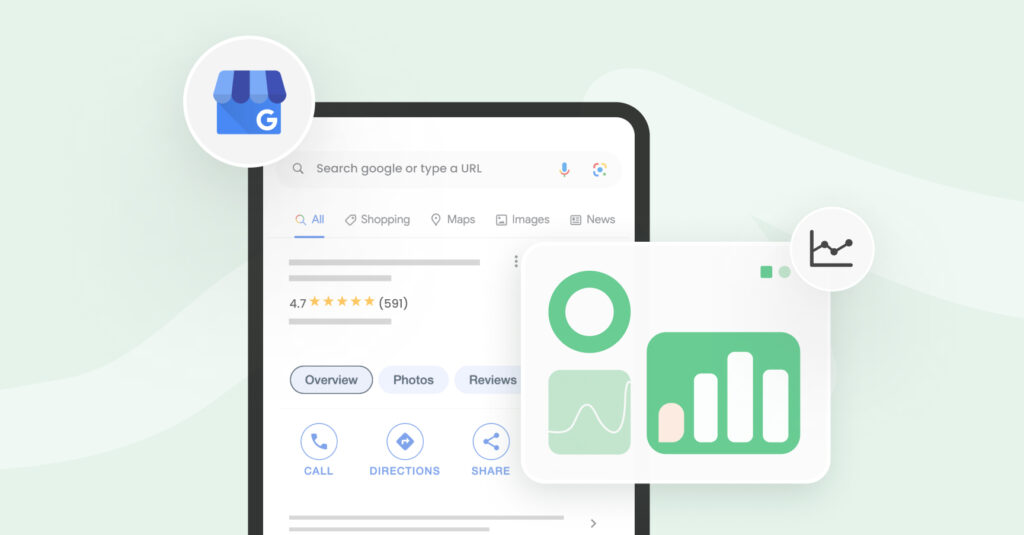

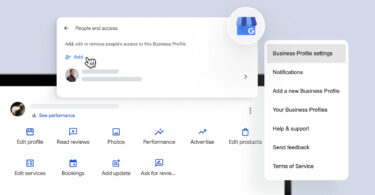
![[Feature image] Google Business Profile Reinstatement_Appeal Process](https://birdeye.com/blog/wp-content/uploads/Feature-image-Google-Business-Profile-Reinstatement_Appeal-Process-375x195.jpg)
